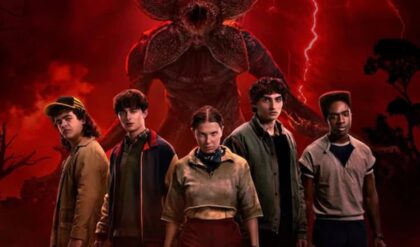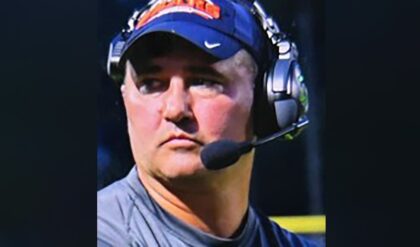True Detective‘s fourth season, Night Country, delivers the show’s usual eerie, atmospheric storytelling. A new mystery set in a hockey rink with frozen, deformed corpses premieres this season in Ennis, Alaska. The investigators assigned to this chilling case must navigate secrets, bereavement, and constant fear.
Similar to its forerunners, the program delves into the shadowy edges of human nature as the narrative develops. Fans of True Detective are curious to find out if Season 4 and the highly regarded Season 1 are related.
The answer is yes. Even though Night Country is a compelling tale on its own, True Detective season 4 has stylistic and narrative references to the HBO anthology series’ first season.
These linkages are intricately woven into the story and provide a new angle on the topics covered in Season 1. They are not merely passing allusions. The connections between the two seasons give the anthology series a sense of continuity and enhance the watching experience.
This exploration reveals how Night Country pays homage to the first season and also challenges and reinterprets its core ideas, creating a dialogue between past and present within the True Detective universe.
The corpsicle: A chilling connection in True Detective
Jodie Foster in True Detective (2014) (Image via HBO Max)
One of the most striking connections between True Detective Season 4 and Season 1 is the use of grotesque murder tableaux. In Night Country, the “corpsicle” scene-where frozen bodies are discovered in a hockey rink-immediately brings to mind the disturbing imagery of Dora Lange’s body in Season 1.
Both scenes feature victims displayed in unnatural, ritualistic ways, serving as a visual and thematic bridge between the seasons. These images are more than just shock value; they symbolize the underlying darkness that permeates both stories, highlighting the recurring themes of violence and the perverse ways in which it manifests.
Investigative dynamics: Women versus men
By putting women at the center of the investigation, True Detective Season 4 also ushers in a dramatic change in the narrative. The dynamic from Season 1, when male detectives Rust Cohle and Marty Hart were the main focus, has been purposefully reversed.
Women work as detectives in Night Country, and their methods of conducting investigations differ greatly from those of their male counterparts in the first season. This shift not only questions established gender roles in crime dramas but also gives the show more depth by examining how various viewpoints can result in various interpretations of the same sinister realities.
The spiritual and the skeptical: A dialogue between beliefs
Another connection between the two seasons lies in the philosophical dialogues between the characters. In Season 1, the conversations between Rust Cohle, a nihilist, and Marty Hart, a more conventional man, added layers of meaning to the narrative.
Similarly, True Detective Season 4 features characters who grapple with their beliefs-one spiritual, the other skeptical. This duality reflects the internal conflict that many people experience, making the show relatable while also maintaining the intellectual depth that fans appreciated in the first season.
The return of Carcosa and Tuttle United
The mythos of True Detective is further expanded in Season 4 with the reappearance of symbols and entities from Season 1. The spiral symbol associated with Carcosa-a mysterious and malevolent place-makes a return, maintaining its ominous significance.
Additionally, Tuttle United, a company linked to the corrupt figures in Season 1, is revived, suggesting that the sinister forces that were hinted at in the first season continue to exert their influence. These callbacks serve to reinforce the idea that the darkness explored in True Detective is pervasive and enduring, transcending individual stories to form a broader commentary on corruption and evil.
Travis Cohle and the legacy of Rust Cohle
One of the more direct connections is the revelation that Travis Cohle, a character in Season 4, is actually the father of Rust Cohle from Season 1. This tie adds a personal dimension to the narrative, linking the past and present through family legacy.
The mention of Travis Cohle as a survivalist who died in Alaska not only connects the two characters but also adds depth to Rust’s backstory, offering insights into the influences that shaped him.
The narrative and thematic connections between Season 1 and 4 are very close. Night Country weaves a complex web that unites the two seasons and stands alone as a potent narrative thanks to its use of unsettling imagery, character dynamics, philosophical debates, and overt allusions.
Season 4 of True Detective is an interesting continuation of the show’s history because the connections go beyond simple nostalgia and give the show’s recurring themes more depth. As viewers explore the mysteries of Night Country, they are asked to think about the show’s enduring questions about what justice, evil, and humanity are.



